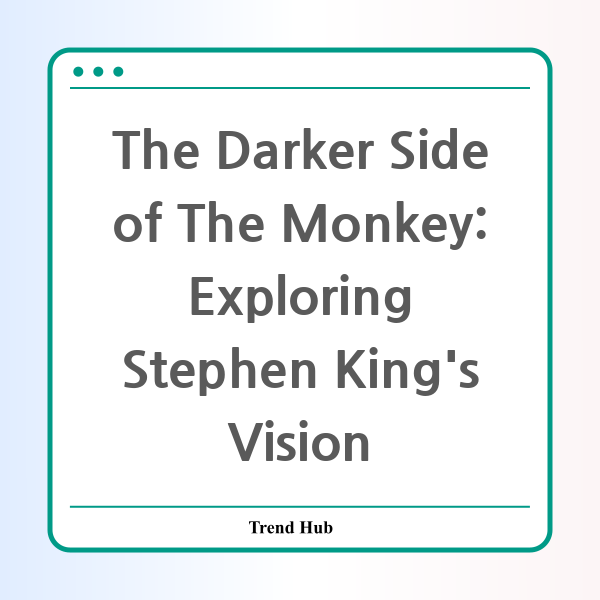* This website participates in the Amazon Affiliate Program and earns from qualifying purchases.

Have you ever wondered how adaptations can dramatically alter the essence of a story? Stephen King’s intriguing short story, The Monkey, is getting a new spotlight with its recent adaptation, but many fans are left pondering the differences between the original narrative and its horror movie retelling. The original tale, found in King’s Skeleton Crew collection published in 1985, delves into themes of loss, guilt, and the randomness of fate, all of which are expertly crafted into a haunting narrative. On the other hand, Osgood Perkins’ film adaptation, while compelling in its own right, shifts the dynamics and tone of the story significantly. Let’s explore how these differences manifest, particularly regarding the endings of both versions.
The crux of King’s original tale lies in the ominous nature of the monkey itself, a toy that embodies destruction and dread. From the very beginning, King’s narrative introduces the audience not just to the monkey but also to Hal’s stable family life, creating a backdrop of normalcy that is ultimately shattered. Hal’s strained relationship with his son Petey—highlighted by the fact he sees him only once a year—emphasizes the heart of the story: the consequences of neglect. In contrast, in Perkins’ adaptation, the relationship dynamics shift significantly, emphasizing paternal ties while introducing new character arcs that diverge from King’s vision.
One notable difference is the portrayal of Bill, Hal’s brother. In King’s version, Bill is not a villain but rather a more complex character dealing with his own grief and guilt. The movie, however, transforms him into a key antagonist, adding layers of familial conflict that were not present in the short story. These changes enhance the movie’s dramatic tension but dilute some of the story's original messages about the randomness of death and loss.
When considering the endings of both versions, the contrast is stark. In King’s version, Hal escapes from a confrontation with the monkey after a perilous struggle, leading to an ambiguous yet ominous outcome where the monkey’s powers continue to plague the world around him. The haunting image of dead fish in Crystal Lake hints at the enduring malevolence of the monkey, leaving readers with an unsettling reminder of its reach. This conclusion feels final yet deeply tragic, encapsulating King’s hallmark themes of despair and inevitable loss.
Conversely, Perkins’ adaptation opts for a more ambiguous ending, presenting Hal and Petey driving away with the monkey securely in their possession. This choice opens the door for potential sequels while offering viewers a level of hope, portraying the possibility of redemption rather than the stark reality of eternal struggle with evil. While this ending might appease those seeking a lighter conclusion, it strays from King’s intended message.
Ultimately, the differences between The Monkey as written by Stephen King and its film adaptation highlight the myriad ways stories can be interpreted. While adaptations often seek to breathe new life into narratives, the core of what makes a story impactful can sometimes be lost. Fans of King’s work may appreciate the layered complexity and dark themes of the original story, while others might find the film’s adaptation a more palatable entry point into King’s world. Regardless, both versions serve to remind us of the intricacies of life and the unforeseen consequences that often lurk just beneath the surface.
As audiences dive into The Monkey, whether through the pages of King’s spine-chilling short story or the flickering lights of a theater, they are invited to grapple with the haunting nature of fate, the ties that bind us, and the shadows that can emerge from even the most innocent of toys.
* This website participates in the Amazon Affiliate Program and earns from qualifying purchases.